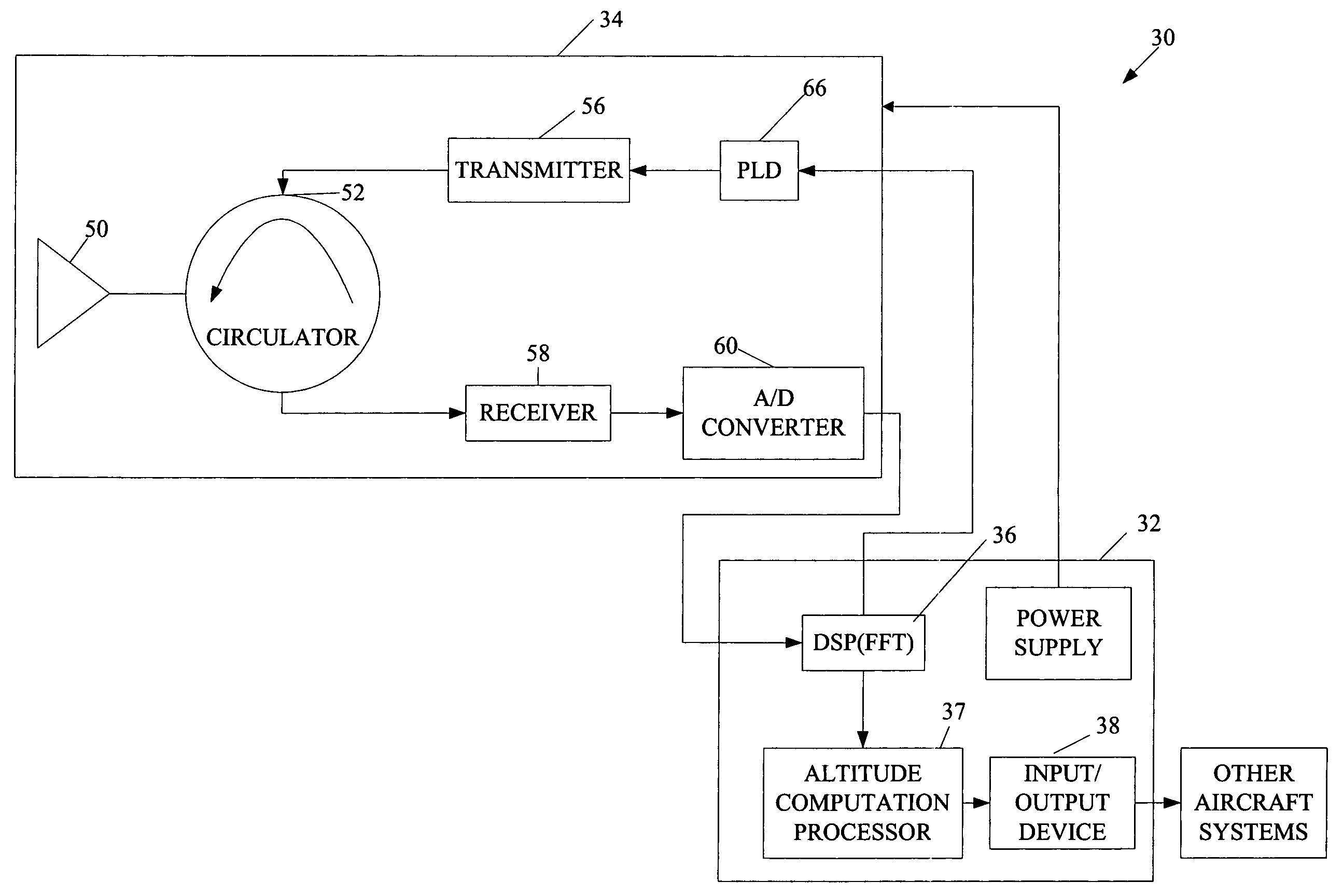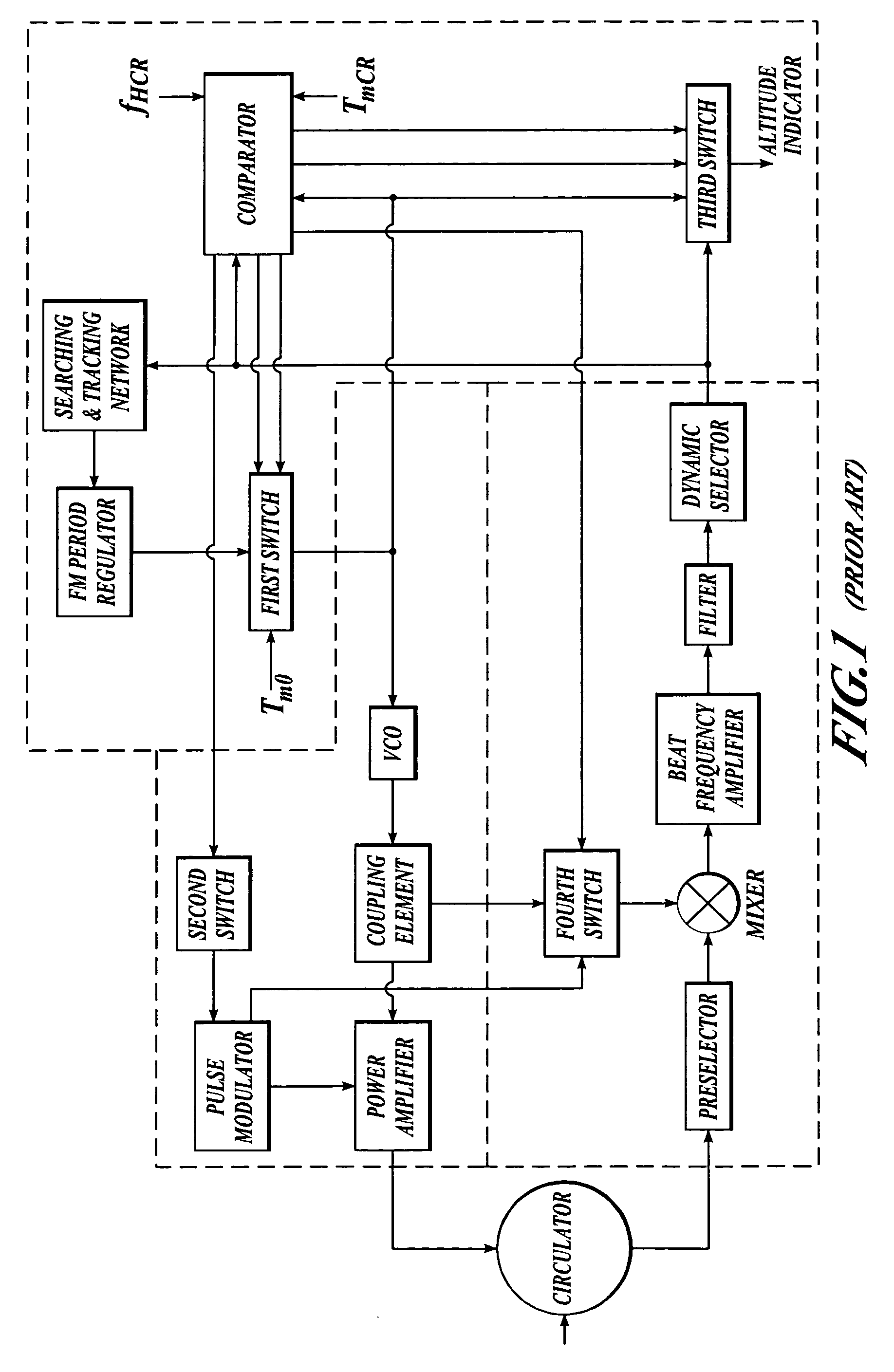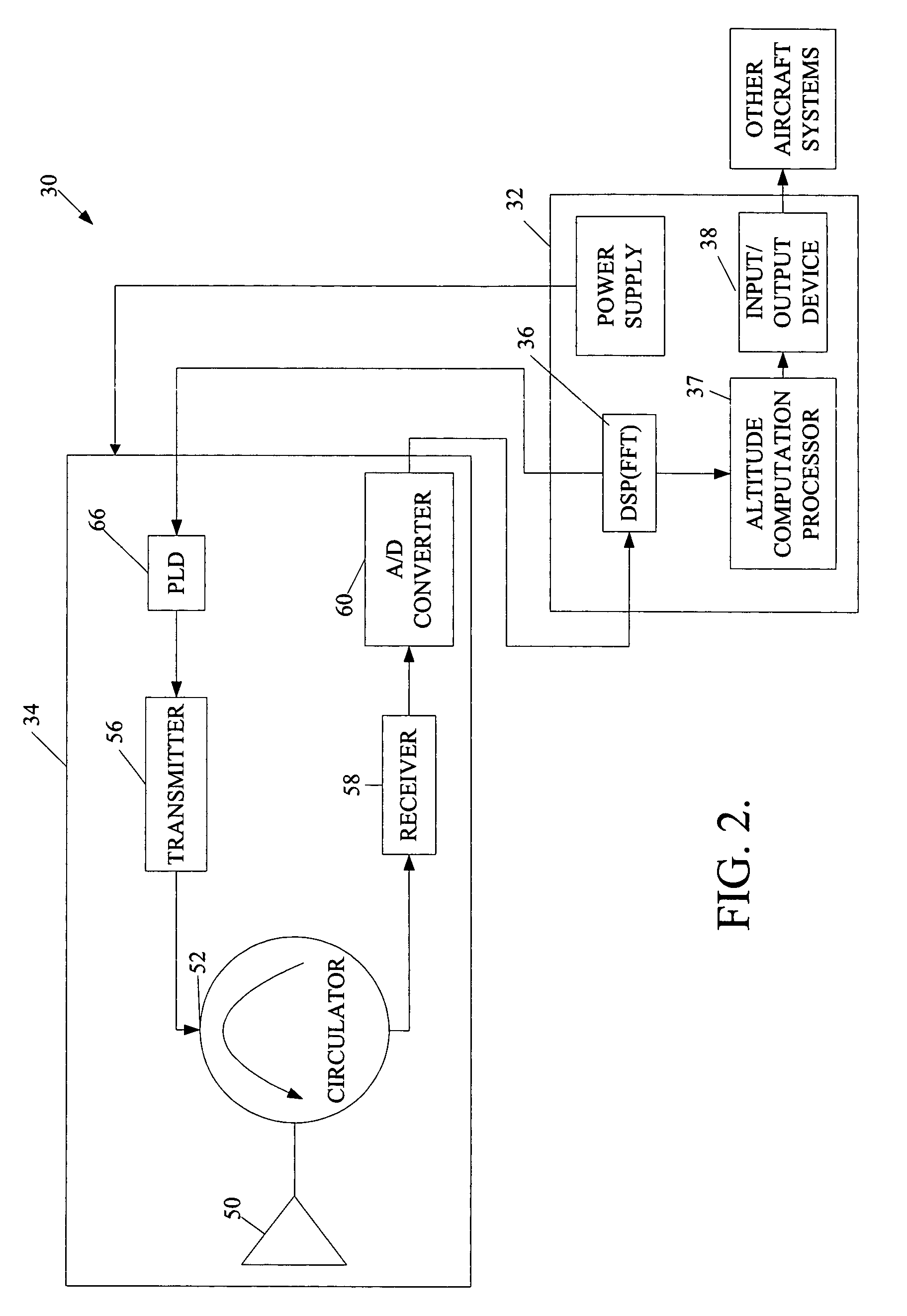Radar altimeter
a technology of radar and altimeter, applied in the field of radar altimeters, can solve the problems of increasing the reflection coefficient, increasing the insertion loss, and increasing the change in propagation delay time, so as to reduce the installation cost and weight
- Summary
- Abstract
- Description
- Claims
- Application Information
AI Technical Summary
Benefits of technology
Problems solved by technology
Method used
Image
Examples
Embodiment Construction
[0027]FIG. 2 illustrates a system 30 that provides more accurate radar altimeter measurements and tail strike warnings. The system 30 includes a radar altimeter 34 and an signal processing system 32. The signal processing system 32 includes a processor 36, an Altitude Computation Processor (ACP) 37 and an input / output device 38. In one embodiment, the processor 36 is a digital signal processor (DSP) with Fast Fourier Transform (FFT) or a Field Programmable Gate Array (FPGA). The radar altimeter 34 is in signal communication with the signal processing system 32 and other aircraft systems, such as a ground-proximity warning system. The radar altimeter 34 sends serial data produced by an Analog to Digital (A / D) Converter 60 to the processor 36, which in turn transfers altitude bin data to the ACP 37. The ACP 37 analyzes distance to ground values and may generate a tail strike warning based on the analysis. If the ACP 37 produces a tail strike warning, the input / output device 38 present...
PUM
 Login to View More
Login to View More Abstract
Description
Claims
Application Information
 Login to View More
Login to View More - R&D
- Intellectual Property
- Life Sciences
- Materials
- Tech Scout
- Unparalleled Data Quality
- Higher Quality Content
- 60% Fewer Hallucinations
Browse by: Latest US Patents, China's latest patents, Technical Efficacy Thesaurus, Application Domain, Technology Topic, Popular Technical Reports.
© 2025 PatSnap. All rights reserved.Legal|Privacy policy|Modern Slavery Act Transparency Statement|Sitemap|About US| Contact US: help@patsnap.com



